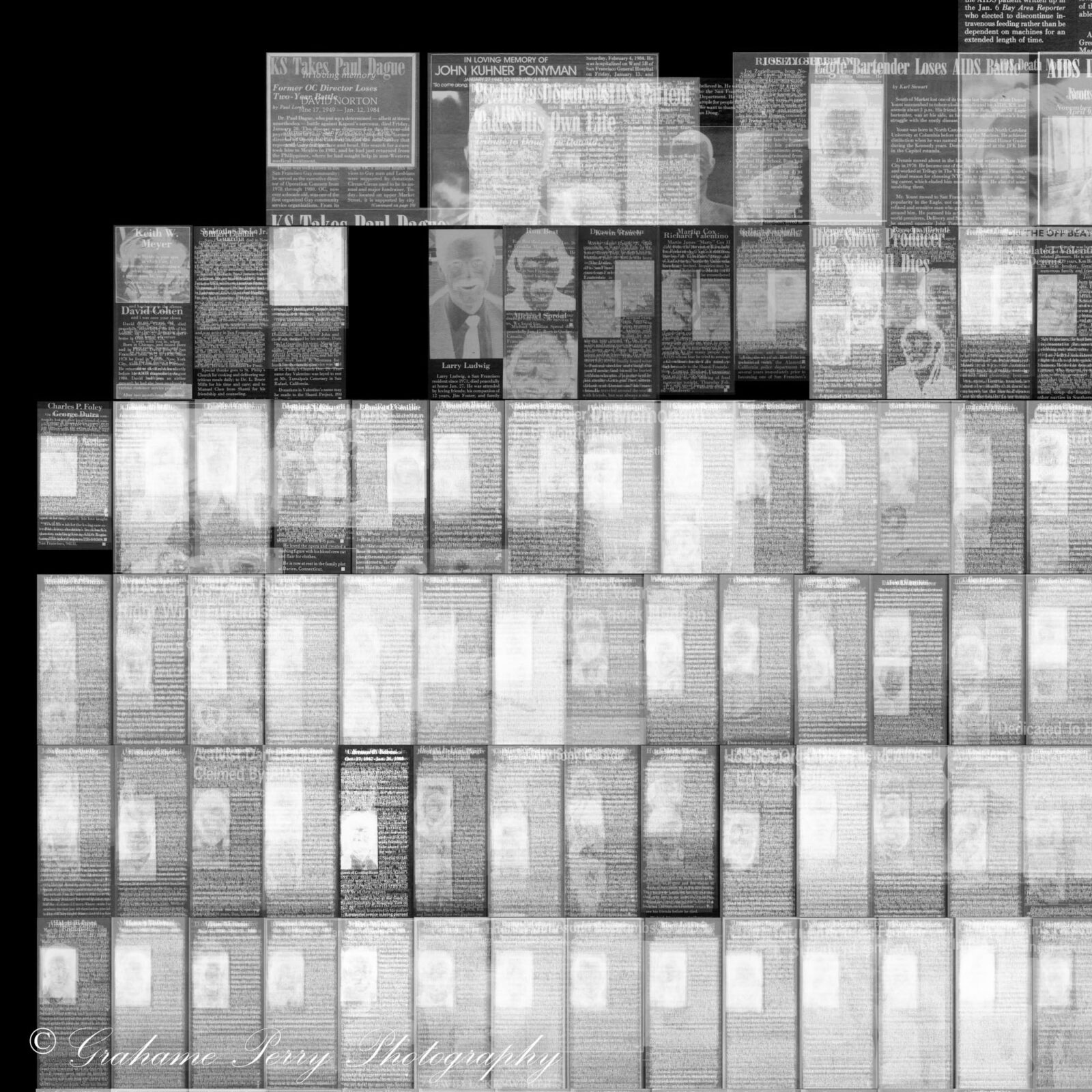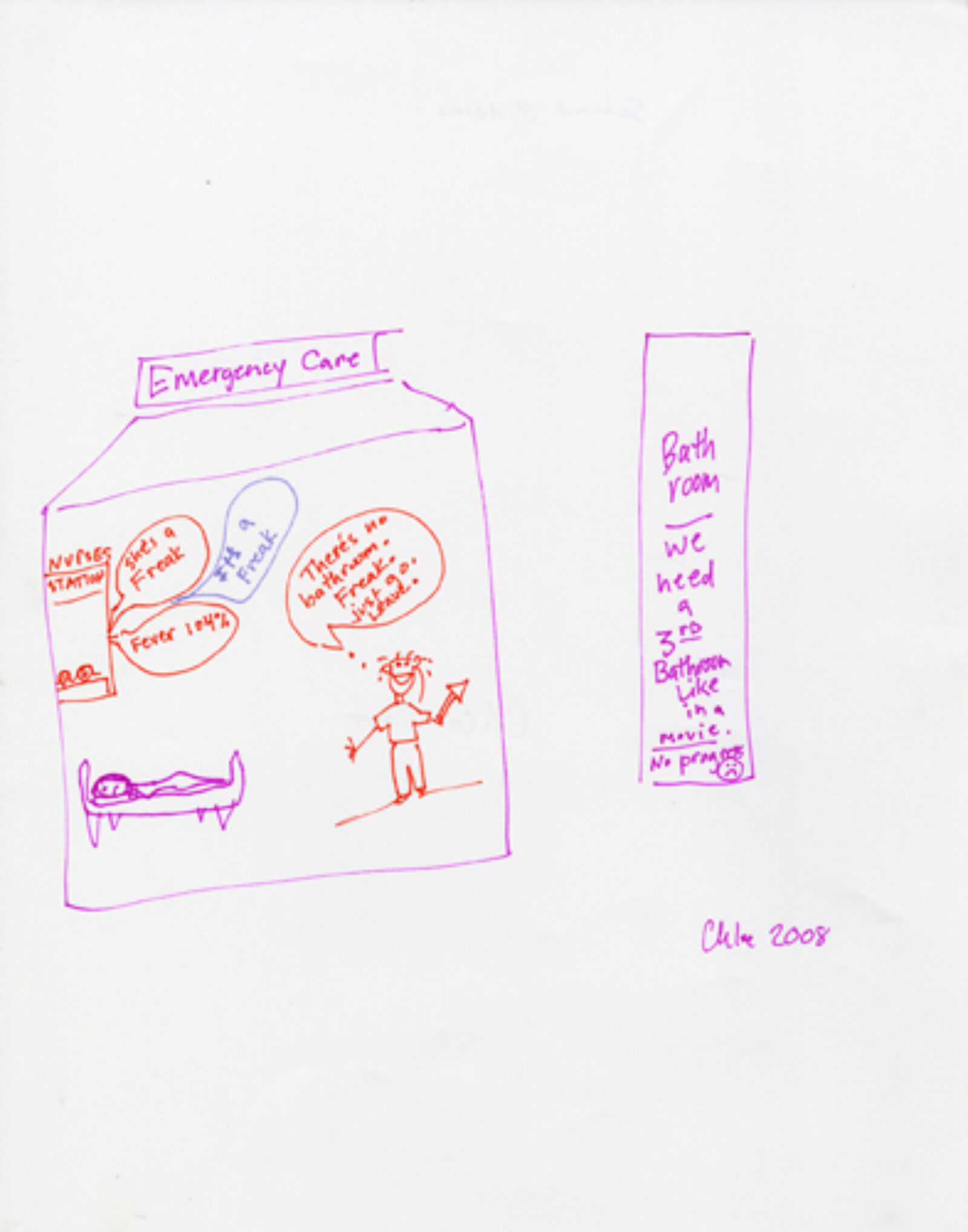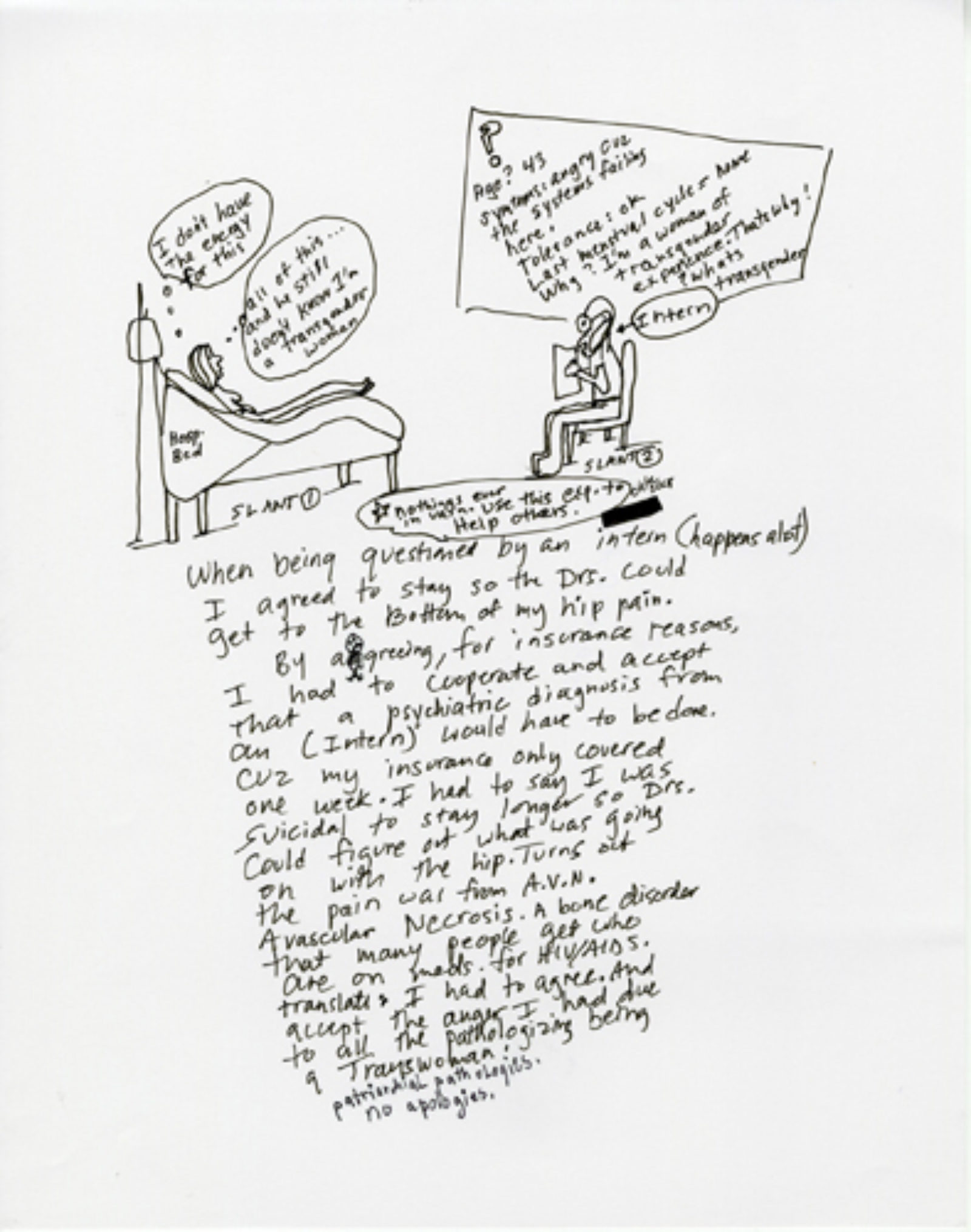






























featured gallery for October 2016
Care
How do you show how you care? How do you represent that invisible force of love that surrounds and connects each of us to each other, and propels each of us in different directions? We show our care when we show up to the studio to make an incredible art work, go to the hospital with flowers to visit a friend, to a protest to show our support of an issue and a commitment to making change, make a meal for ourselves. The word “curator,” comes from the Latin “to care for,” and historically has directed that care to objects held within a museum collection. Museological care is imbued upon objects with the intention of preserving them beyond the natural effects of time. It is an extension of our love for living and the living that we take care of things. In this way, archives such as Visual AIDS’s Artist+ Registry function through acts of care, a fundamental unit of our relationship to objects and of relationships between people and communities. This web gallery gathers together works from Visual AIDS’s Artist+ Registry that present different kinds of care to understand how the ways we care for people, things, memories and history intersects.
It is befitting that Rob Anderson rendered his portrait of Norman Tyler Larson with such meticulous detail. Larson, a preservationist based in San Francisco, is forever preserved at the moment of the portrait’s painting in an instance where the method and style of execution echoes aspects the person embodies in the role he enacts in life. In addition to being a painter, Robert Miles Parker was also a preservationist. These two occupations meet in his portraits of flower bouquets. I say portraits and not still lifes, because each is meant to be a representation of a specific bouquet—tied to specific events, holidays, or anniversaries—and is not a generic flower arrangement. His paintings preserve the flowers and the moment they commemorate beyond their short ephemeral lives. Barton Lidice Beneš, Robert Beard and Grahame Perry all enact curatorial roles in relationship to objects of their own creation. Beñeš’ Large Shard is, as its title suggests, a large shard from a terracotta pot that has been rubber stamped with the artist’s story, to make an artifact in the present that acknowledges another life in the future. Robert Beard’s Thinking Of You, Hudson evokes the museological by utilizing the pedestal as a display system that signifies importance and protects objects from interaction. To construct the installation Every aids obituary, Grahame Perry searched the archive of The Bay Area Reporter for every obituary memorializing a person who had died of AIDS.
Kelvin Atmadibrata’s performance with a mannequin begins to bridge the gap between how we care for things and how we care for people. His prop shares the same size and form as a person and thus becomes an easy substitute upon which to perform acts of care. Ben Cuevas’s Duality no. 1: Masculine/Feminine, a sweater for two attached at the back, spoke to me about interdependency, mutual reliance. Cuevas’s garment visualizes the ways in which we are interconnected and finds a visual parallel in the entanglement of limbs in Jürgen Baldiga’s portrait, Eros und juengling.
Pepe Espaliú and Chloe Dzubilo extend considerations of care to disability and the care we receive in the medical industry. I especially love Espaliu’s drawing of a pair of crutches connected by a tangle of long cords. Drawings such as these related to Espaliu’s work in performances such as Carrying, where friends carried the artist as a physical reality and a symbol of support, and in sculptural installations of a rickshaw suspended in the air when embedded in the wall. I've included multiple drawings by Chloe Dzubilo because they speak to the care that is so often lacking for trans people and folx of color, those living with AIDS and HIV, and a whole swath of people, by institutions that are imbued with the power of giving care.
I also smoked for twenty years so I don't want to imply that care looks or is a certain way: meticulous, clean, sterile, exact. While it is incredible when someone is able to meet our invisible and unarticulatable needs in the very specific ways that we sometimes need them, I also want to make space for the ways that we sometimes fumble interpersonally when we hold each other and ourselves, and that those fumblings are the result of being human and in no way constitute a lack of care. The media and health industries tell us that care of self looks like going to the gym, eating a certain proportion of protein to fat ratio, etc; standards that are impossible for most bodies and often undesirable as well. I understand that the ways we care for ourselves and others is often imperfect, until we figure out another system. We exhibit care in the ways we fashion ourselves, even when those ways intentionally look like we don’t care. We can have AIDS, be slobs, poor, homeless, fat, ugly, all of the above and more, and still care for and about ourselves and be deserving and giving of care. This is one one of the reasons I'm in love with Sean Black’s self portrait, the first image of the web gallery. It shows a version of self-care very close to how I take care of myself. In addition to being a portrait of high femmedom communicated in the barest (literally) signifiers, it also expresses how self-care can sometimes be lounging in a pair of heels. For me, at least.
